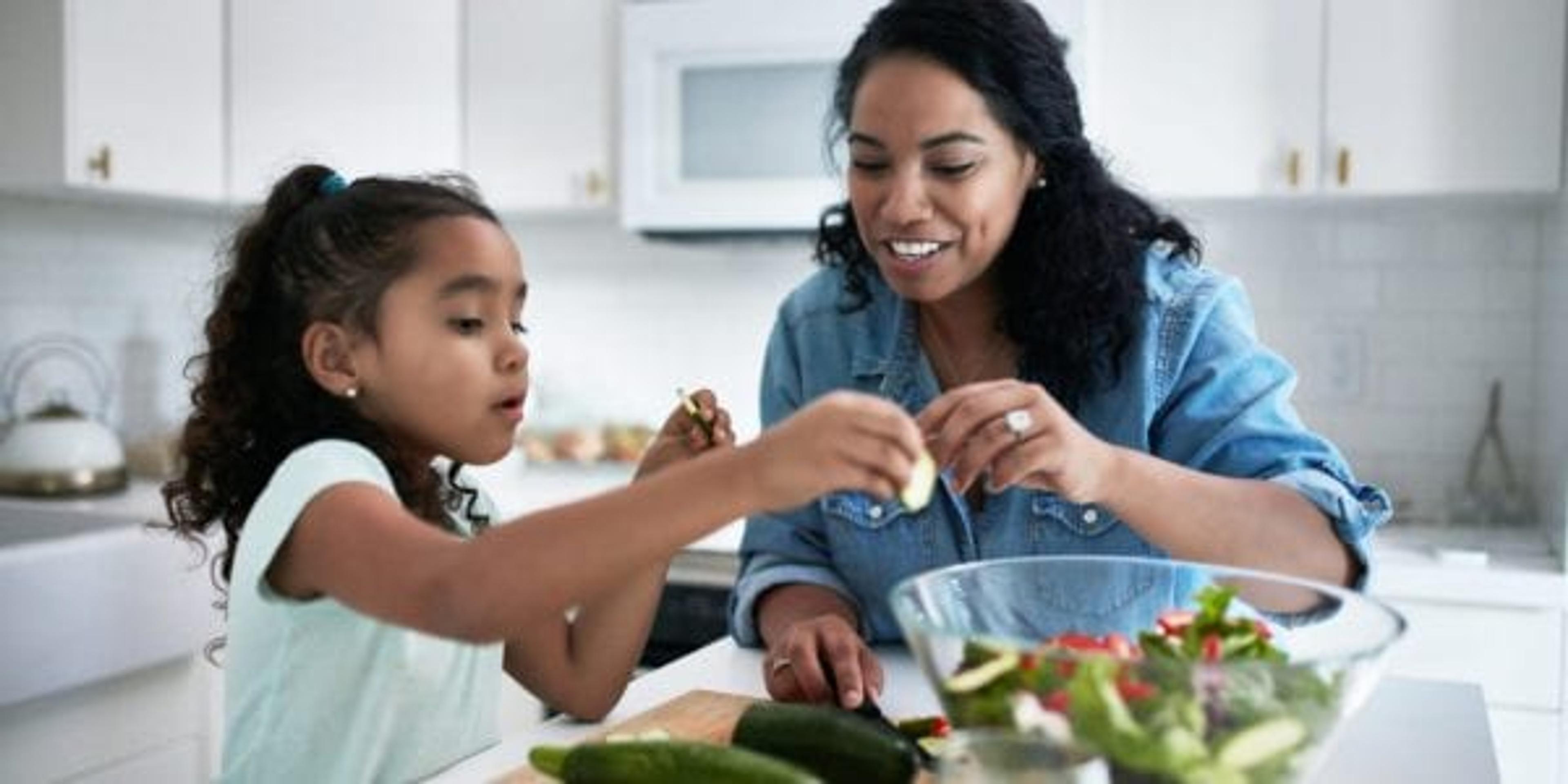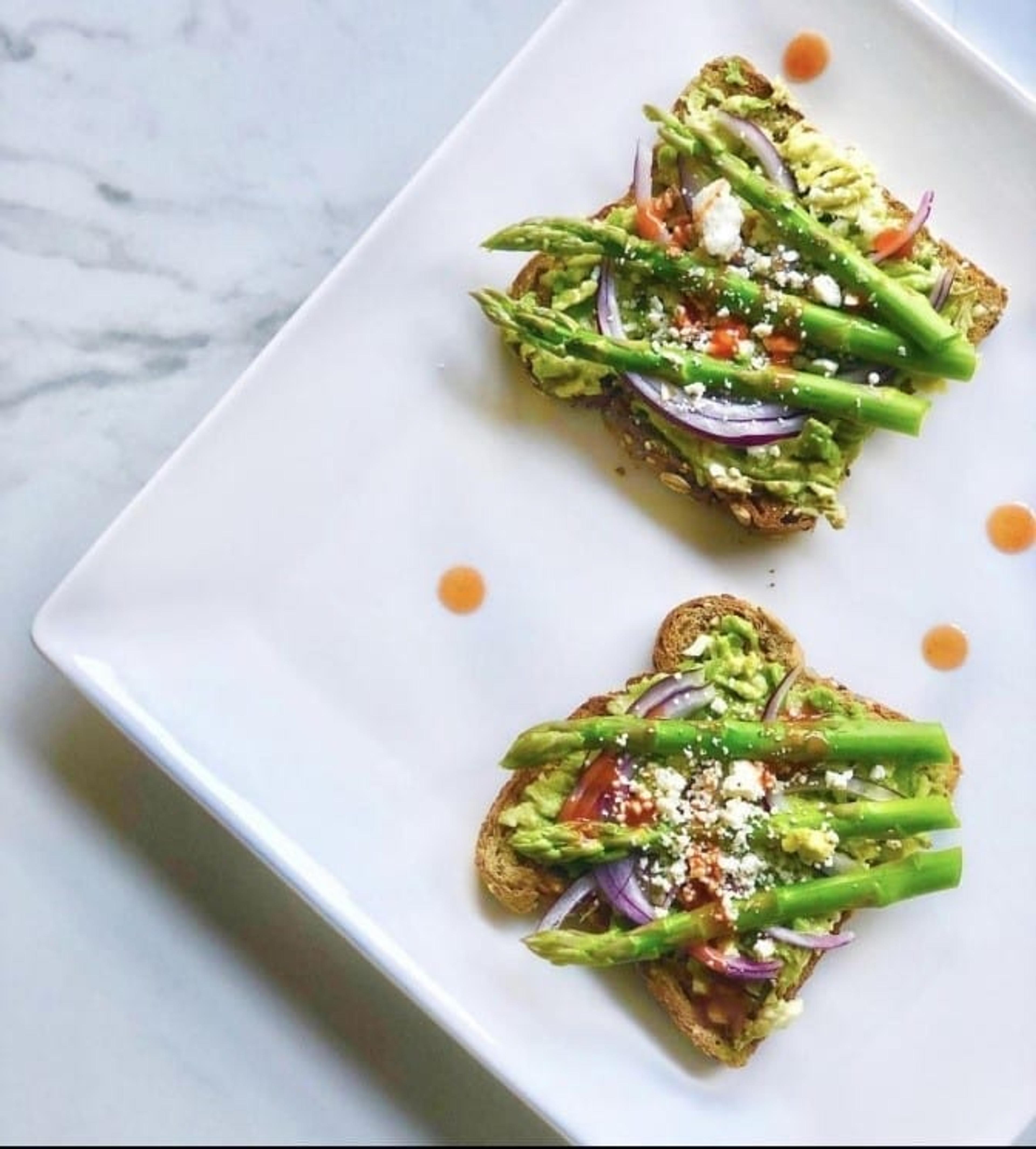Back-to-School Lunch During COVID-19

Shanthi Appelo, MS, RD
| 4 min read

Whether your child will be in a traditional classroom or the dining room as a makeshift learning space, it’s important to start the year out right by fueling growing bodies and developing brains. But just because the school year is untraditional doesn’t mean that your schedule is. For busy parents, it can be challenging to start preparing lunches if your child’s normal is a cafeteria meal. Let’s dig into some ways you can empower children to eat healthy lunches.
Involve your children.
The majority of U.S. children don’t meet the daily recommendation of eating 2 ½ cups of vegetables and 1 ½ cups of fruit. However, children are more likely to eat healthy foods if they are part of the selection and preparation process. Preschool kids can help wash produce, tear lettuce and mix ingredients. Older children, depending on their gross motor skills and age, can handle vegetable peeling, opening cans, beating eggs, baking foods in the oven and even cutting foods. Every child is different, and as their parent, you’re the best judge of their ability.

Photo credit: Shanthi Appelo
Ditch the PB&J and let your child be the sandwich artist:
- Offer whole wheat (packed in fiber and full of B vitamins and antioxidants) as your base whether that be bread, tortillas, English muffins or bagels.
- Provide choices such as hummus, avocado and other healthy fat/protein spreads rather than mayonnaise.
- Let your child select at least one vegetable. By giving your child a choice, they’ll feel less “forced” to eat vegetables.
- Opt for leftover protein from dinner such as grilled/baked chicken or fish.
- Channel their creativity by letting them lightly drizzle a sauce over the sandwich such as hot sauce, ranch, salad dressing or sriracha.
Include at least three out of five food groups.
The key to healthy eating is balance – eating a variety of food groups and colors allows you to consume more of the nutrients you need. Children need hearty carbohydrates to power up their brains for learning and active play while protein and healthy fats play an important role in satiety, or feeling full. To ensure your child is getting a variety, include at least 3 out of the 5 food groups at lunch (more is better): fruits, vegetables, dairy, protein and grains. Knock out the dairy piece by serving non-fat or low-fat milk or a substitute.
Piece together a meal with kitchen staples and pre-packaged foods, mix and match between the categories:
Combos Fruits Vegetables Dairy Protein Grains 1 Berries Cucumber slices Greek yogurt (also a protein) Handful of nuts (a healthy fat) Granola 2 Fruit cup Snap peas String cheese Flavored tuna packet Low-fat whole wheat crackers 3 Banana Guacamole packet Low-fat milk Hard-boiled egg Low-fat whole wheat crackers 4 Sliced apple Bell pepper slices Greek yogurt ranch dip (also a protein) Almond butter (a healthy fat) Whole wheat toast
Prepare ahead of time:
- Chilled whole wheat pasta salad with leftover protein like rotisserie chicken, made creamy with protein-rich Greek yogurt and mayonnaise and packed with veggies such as peas, celery, julienne cut bell peppers.
- Slow cooker meal with staple ingredients such as two chicken breasts, a cup of low sodium chicken broth, a couple of tablespoons of olive oil and vegetables of your choice make a healthy lunch to prepare ahead of time. Add ½ cup Greek yogurt to heat and whisk in with the slow cooker liquid along with 2 tbsp of flour when finished cooking for a creamy, calcium-rich sauce. Salt, pepper, minced garlic, thyme and rosemary are great spices to include. Cooking it on low for about 5 hours will make the flavors combine and develop. Cook whole grain rice separately to make the texture as desired and prevent it from getting mushy.
- Chickpea salad with pre-shredded cabbage, chopped onions, cucumbers, herbs and peanuts. Toss ingredients in a vinaigrette of your choice.
Set an example.
If you have the opportunity because you’re working from home and your child is learning virtually, make lunches family-style to connect with your child about their school day. Sitting together at the table is a great way to role model healthy eating. Kids who participate in family meals tend to eat more fruits and vegetables, do better in school and are less likely to have behavior problems. Some researchers have even revealed that family meals are a better predictor of achieving in school even over participating in extracurricular activities such as sports and art.
Furthermore, role modeling is one of the most important ways you can influence your child to eat healthy. If you and your child are both packing a lunch, make sure you are setting a good example and packing something similar. If you expect your child to eat healthy, why shouldn’t you?
About the author: Shanthi Appelo is a registered dietitian and health and wellness spokesperson for Blue Cross Blue Shield of Michigan.

Related:
Main image photo credit: xavierarnau





